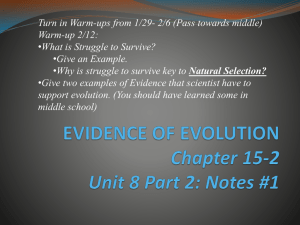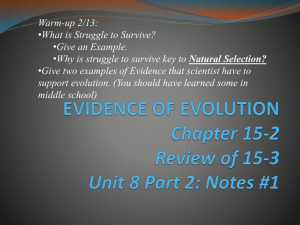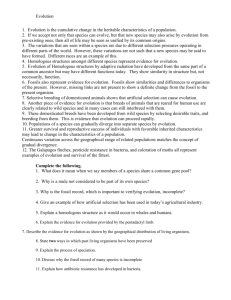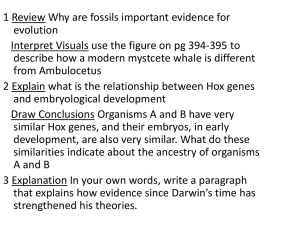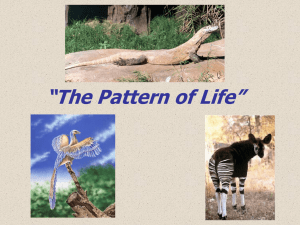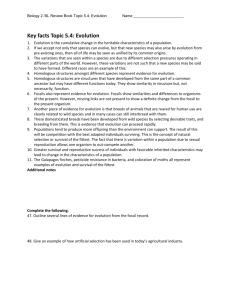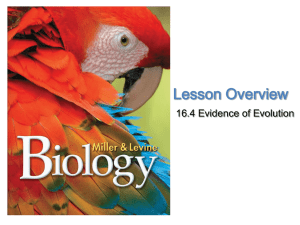Biology – Chapter 16 Study Guide
advertisement
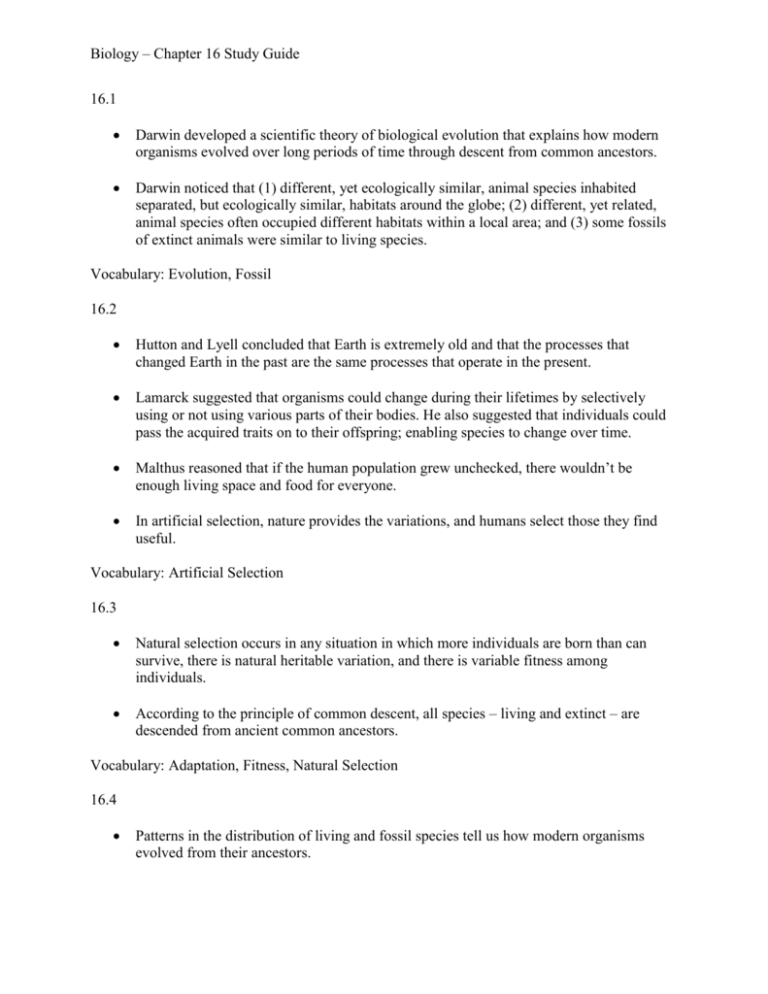
Biology – Chapter 16 Study Guide 16.1 Darwin developed a scientific theory of biological evolution that explains how modern organisms evolved over long periods of time through descent from common ancestors. Darwin noticed that (1) different, yet ecologically similar, animal species inhabited separated, but ecologically similar, habitats around the globe; (2) different, yet related, animal species often occupied different habitats within a local area; and (3) some fossils of extinct animals were similar to living species. Vocabulary: Evolution, Fossil 16.2 Hutton and Lyell concluded that Earth is extremely old and that the processes that changed Earth in the past are the same processes that operate in the present. Lamarck suggested that organisms could change during their lifetimes by selectively using or not using various parts of their bodies. He also suggested that individuals could pass the acquired traits on to their offspring; enabling species to change over time. Malthus reasoned that if the human population grew unchecked, there wouldn’t be enough living space and food for everyone. In artificial selection, nature provides the variations, and humans select those they find useful. Vocabulary: Artificial Selection 16.3 Natural selection occurs in any situation in which more individuals are born than can survive, there is natural heritable variation, and there is variable fitness among individuals. According to the principle of common descent, all species – living and extinct – are descended from ancient common ancestors. Vocabulary: Adaptation, Fitness, Natural Selection 16.4 Patterns in the distribution of living and fossil species tell us how modern organisms evolved from their ancestors. Biology – Chapter 16 Study Guide Many recently discovered fossils form series that trace the evolution of modern species from extinct ancestors. Evolutionary theory explains the existence of homologous structures adapted to different purposes as the result of descent with modification from a common ancestor. The universal genetic code and homologous molecules provide evidence of common descent. The grants have documented that natural selection takes place in wild Galapagos finch populations frequently, and sometimes rapidly, and that variation within a species increases the likelihood of the species adapting to the surviving environmental change. Vocabulary: Biogeography, Homologous Structure, Analogous Structure, Vestigial Structure


